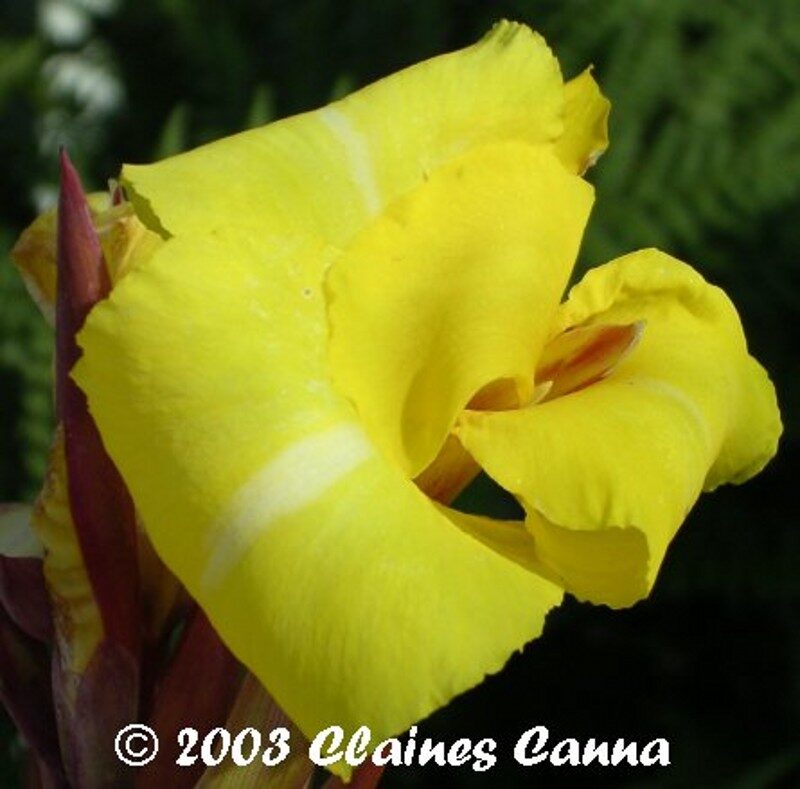
A small Italian Group cultivar; variegated foliage, oval shaped, white margin, spreading habit; round stems, coloured green + purple; spikes of flowers are reflexed, yellow and white, staminodes are large, petals red; seed is sterile, pollen is low fertile; rhizomes are long and thin, coloured white; tillering is average.

Nurserymen folk legend has it that in 1923 a consignment of Canna ‘Trinacria’ rhizomes was despatched to Siam, now Thailand, from a nursery in California. When it arrived at its destination and was grown out it was found to have variegated foliage. A sample was returned to the nursery with a demand for a refund or replacement as it was not what had been ordered.
This mutation was probably caused by the extreme conditions endured in transport from California to Thailand in the days before air travel. The cultivar was examined in the 1960’s by Dr. Khoshoo, who stated that this was not a chimeral mutation.
The earliest reference to this plant is C. ‘Trinacria Variegata’ in Sydney Percy-Lancaster’s book, “In an Indian Garden”, 1927.

When the ancient kingdom of Sicily was divided in two between the House of Aragon and the Angevins after the Peace of Caltabellotta (1302), the name Kingdom of Trinacria was sometimes given to Sicily, which belonged to Frederick II . The triskele serving as the emblem of Sicily since Antiquity is also called Trinacria . It represents the head of a woman ( Medusa , one of the three Gorgons ), winged and topped with a knot of serpents and ears of wheat, from which three bent legs radiate, as if seized in mid-race.